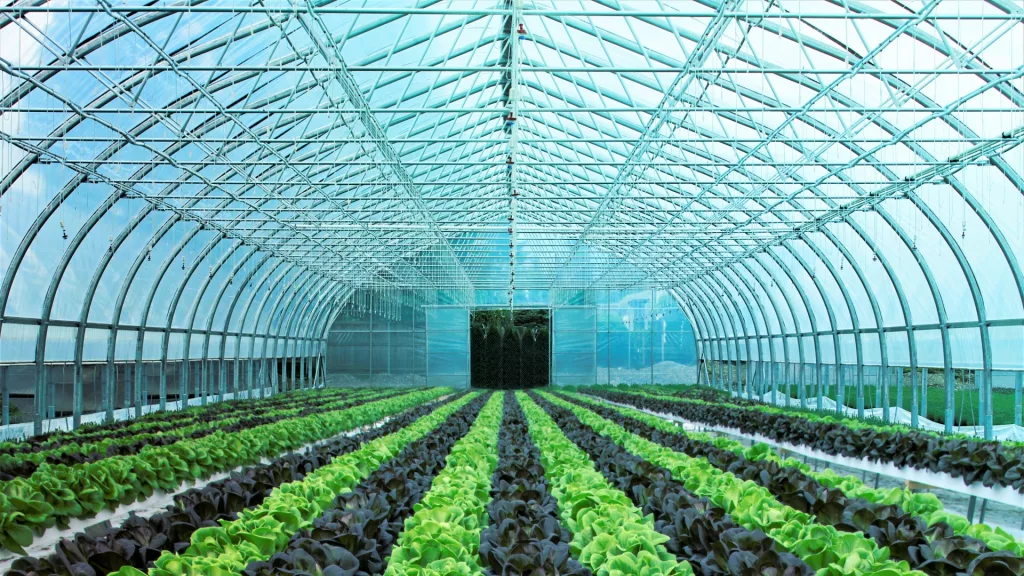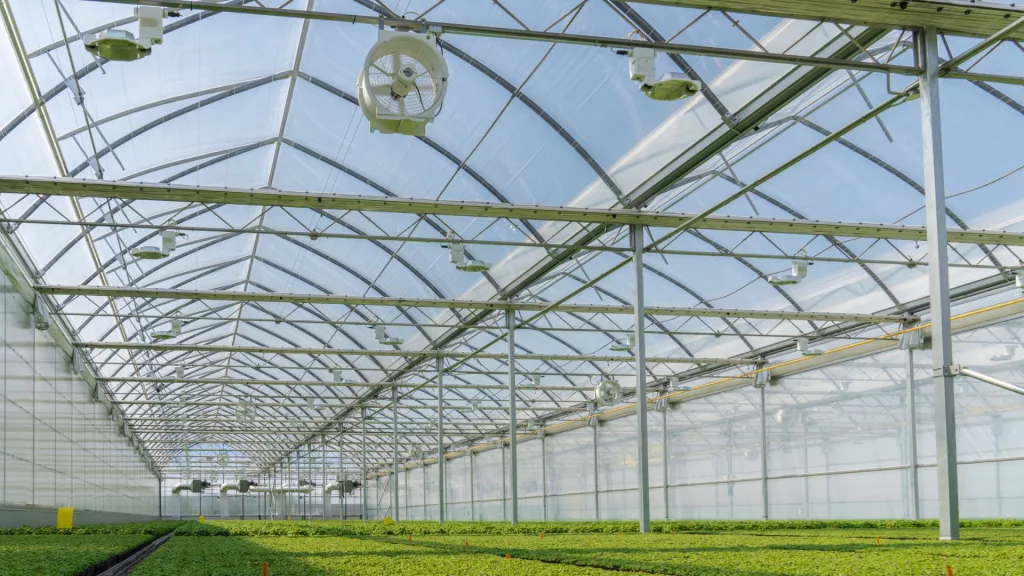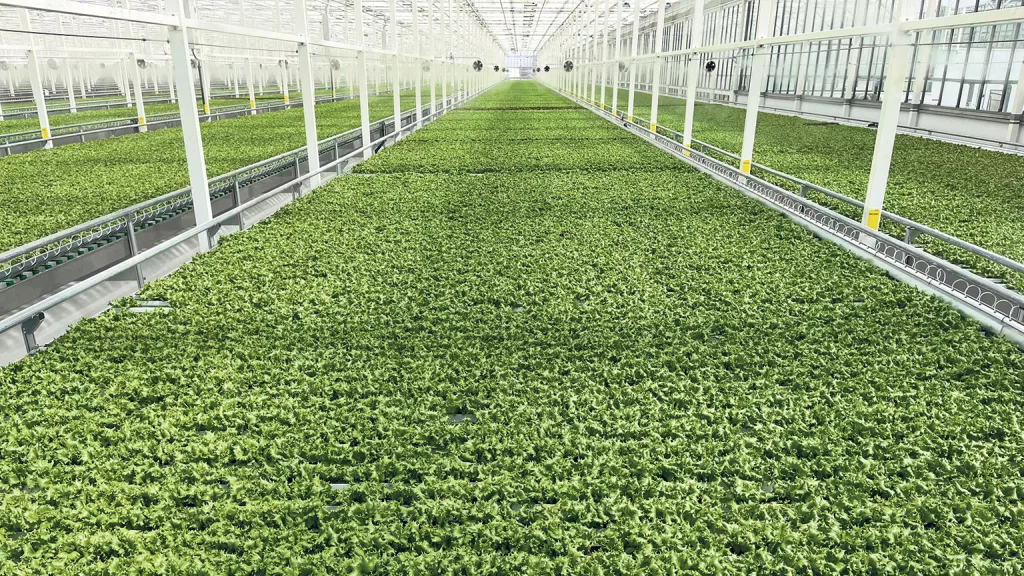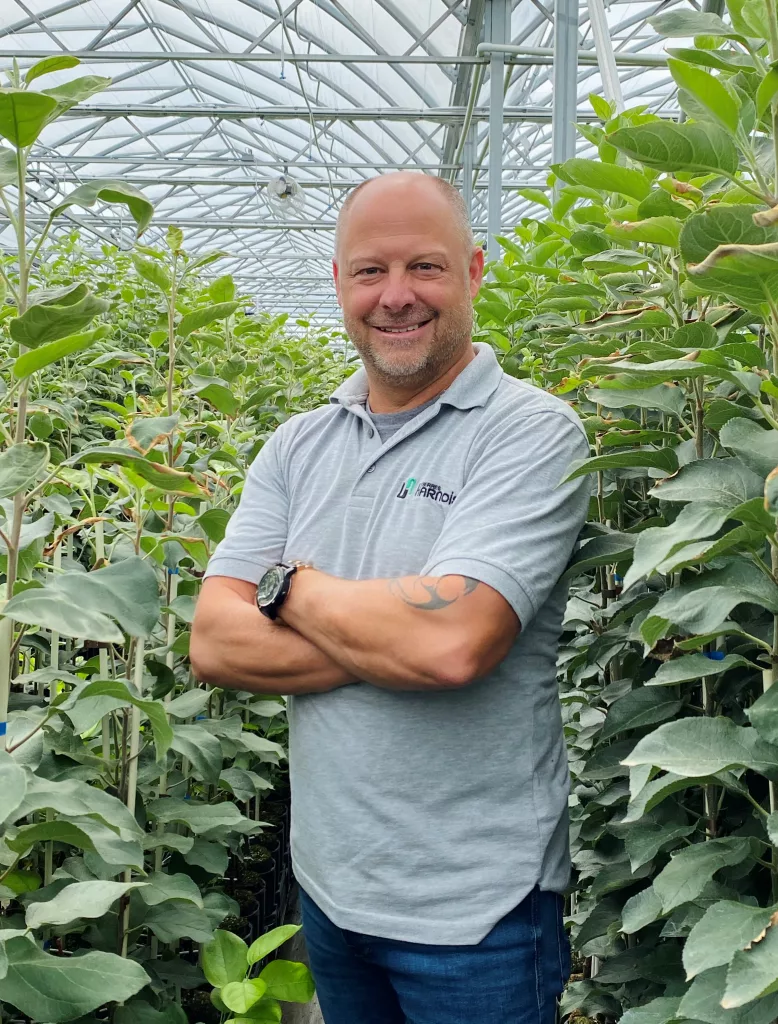Summary
Commercial greenhouse cost per square foot varies widely based on scale and sophistication:
- small commercial greenhouses (under 10,000 ft²) typically cost $6–$10 / ft²;
- mid-size units (~10,000‑50,000 ft²) range from $15–$20 / ft²;
- large-scale operations (over 50,000 ft²) may cost $20–$50 / ft² or more depending on advanced system
Final costs influenced by materials and added systems: structure type (e.g. high tunnels, freestanding, gutter-connected), coverings (poly film vs. glass), climate-control systems (automation, heating, ventilation) and foundation all contribute to cost variation toward the upper end of the spectrum.
Economies of scale and phased expansion reduce per-unit cost: larger structures benefit from lower cost per square foot, and Harnois’ modular systems support phased build-out to spread investment and scale as demand grows
Building a commercial greenhouse is a significant investment that can yield substantial returns when planned and executed correctly.
Understanding commercial greenhouse cost for your project
Costs vary significantly based on factors such as size, structure type, materials, and added systems like automation or climate control. Whether you’re evaluating a traditional frame or a more advanced oval tube greenhouse, this guide breaks down the key components that influence the overall cost of a commercial greenhouse, helping you assess whether it’s the right investment for your business.
On average, you can expect to spend anywhere from $6 to $60 per square foot, with larger and more technologically advanced greenhouses at the higher end of the spectrum.
Is a Commercial Greenhouse right for you?
Commercial greenhouses are ideal for established farmers, professional growers, and agribusinesses looking to scale operations. Unlike smaller setups for hobbyists or market gardeners, commercial greenhouses are equipped with robust materials and advanced equipment designed for year-round, high-volume production.
They also play a growing role in Controlled Environment Agriculture (CEA); a farming approach that reduces the risks of climate change and extreme weather by offering stable, indoor growing conditions. This reliability makes them especially valuable for growers seeking to supply local markets with fresh produce throughout the year.
While the commercial greenhouse cost can be higher than simpler structures, the investment pays off in long-term efficiency, scalability, and profitability. If you’re starting in agriculture, a more straightforward greenhouse may be more appropriate. However, for those seeking to expand an existing operation or diversify crops, a commercial greenhouse offers long-term value, especially with programs like NRCS EQIP, which provides subsidies to support adoption.

Initial Investment Breakdown
Cost per Square Foot by Greenhouse Size
| Greenhouse Size | Cost Range (per sq.ft.) |
|---|---|
| Small (<10,000 ft²) | $6 to $10 |
| Medium (10,000–50,000 ft²) | $15 – $20 |
| Large (>50,000 ft²) | $20 – $50 |
Larger greenhouses tend to benefit from economies of scale, making them more cost-efficient per square foot despite higher upfront totals.
Commercial Greenhouse Structure Types
Your choice of structure has a major impact on both commercial greenhouse cost and performance:
High Tunnel Greenhouses – Lower-cost seasonal options with minimal automation.
Freestanding Greenhouses – Great flexibility, moderate cost.
Gutter-Connected Greenhouses – Efficient use of space for large-scale operations.
Glass Greenhouses – High upfront cost but excellent light diffusion and longevity.




Site Selection and Orientation
Choosing the right site for a commercial greenhouse is just as critical as selecting the structure itself. Your location will affect everything from construction costs to energy efficiency and crop performance. It’s a foundational decision that influences both short-term setup and long-term profitability, and has a direct impact on your total commercial greenhouse cost.
Sunlight Exposure
Maximizing natural sunlight reduces your reliance on supplemental lighting, lowering operational energy expenses over time and helping to manage the overall commercial greenhouse cost. A commercial greenhouse should ideally be oriented east-west in northern latitudes to capture consistent sun throughout the day. Avoid areas shaded by trees, buildings, or hills, especially during the winter months when light is limited.
Wind Protection and Drainage
A good site will offer natural windbreaks or allow for the installation of barriers to reduce heat loss and structural stress, two major factors that influence heating expenses and, therefore, the lifetime commercial greenhouse cost. Proper drainage is equally important. Standing water not only damages crops and foundations but also encourages disease and pest infestations. Elevated or gently sloped terrain is preferable for consistent water runoff and reduced maintenance costs.
Utilities and Accessibility
Access to electricity, water, and transportation routes should factor into the total commercial greenhouse cost from day one. Installing infrastructure in remote or off-grid locations can significantly drive up both construction and operating costs. Proximity to utilities, suppliers, and distribution channels helps streamline operations, reduce logistics expenses, and improve long-term profitability.
Zoning and Regulations
Before breaking ground, confirm that your site complies with local zoning bylaws and agricultural use regulations. Municipal codes, building permits, and environmental assessments can all affect your project timeline and increase your commercial greenhouse cost if not managed proactively. Identifying these regulatory hurdles early helps avoid unexpected delays and budget overruns.
By thoroughly evaluating site conditions, growers can prevent costly delays and design a greenhouse that performs efficiently from day one. A strategic location is not just a logistical advantage. It’s a critical cost-saving measure and a key contributor to the long-term success of your investment in commercial greenhouse infrastructure.
Commercial Greenhouse Covering Options
One of the most important factors impacting commercial greenhouse cost, energy efficiency, and crop productivity is the choice of covering material. The covering determines how much light and heat your crops receive, how well the structure retains warmth, and how durable the building will be over time.
Each material comes with its own set of advantages and trade-offs. The best choice depends on your climate, crop type, budget, and long-term production goals.
Glass
Glass is the traditional choice for high-end commercial greenhouses, especially in permanent structures designed for long-term use. It offers superior light transmission and exceptional clarity, which is crucial for light-demanding crops.
-
Pros: High light clarity, excellent UV resistance, fire-resistant, long lifespan
-
Cons: Higher initial commercial greenhouse cost, heavier, requires a strong structural frame, more fragile than plastics
-
Best for: High-value crops, research facilities, or operations prioritizing aesthetics and longevity
Polycarbonate
Polycarbonate panels are one of the most popular choices for modern commercial greenhouses due to their durability and thermal efficiency. They are available in single, double, or multi-wall configurations for enhanced insulation.
-
Pros: High impact resistance, retains heat well, filters harmful UV rays, long-lasting
-
Cons: Slightly lower light transmission than glass, can discolor over time
-
Best for: All-season growing, mid- to large-scale commercial setups in cold or windy regions
Polyethylene Film
Polyethylene (PE) film is a budget-friendly option used widely in hoop houses and high tunnels. While not as durable as other materials, it’s easy to install and replace, making it ideal for temporary or seasonal structures.
-
Pros: Low upfront cost, easy installation, flexible application, available with UV and anti-condensation additives
-
Cons: Prone to tearing, degrades over time, needs regular replacement (every 3–5 years)
-
Best for: Cost-conscious growers, seasonal production, or temporary installations
Choosing the Right Covering for Your Greenhouse
Your choice of covering material directly affects not only your crops but also your total commercial greenhouse cost over time. While glass and polycarbonate involve higher upfront investment, they can reduce long-term energy use and maintenance. Conversely, polyethylene is more affordable initially but requires frequent replacement.
It’s also important to consider local climate, crop type, structural load, and even regulatory compliance when selecting your material. The right decision balances performance, longevity, and return on investment.
Material & System for Commercial Greenhouse
Here’s a breakdown of typical commercial greenhouse components and their associated commercial greenhouse cost:
| Component | Estimated Cost per ft² | Notes |
|---|---|---|
| Site Preparation | $1 – $5 | Leveling, grading, trenching |
| Steel or Aluminum Structure | $2.50 – $3.60 | Durable frame, long lifespan |
| Covering | ~$2.50 | Tempered/diffuse glass; high light transmission |
| Shading Systems | $1 – $1.50 | Internal & external systems |
| Cooling & Ventilation | ~$4.50 combined | Wet walls, fans, roof vents |
| Lighting (LED Grow Lights) | Varies significantly | Adds to CAPEX and OPEX |
| Irrigation Systems | $1 – $12 | Manual or automated systems |
| Automation & Controls | $3 – $10 | Includes sensors, climate control |
| Professional Installation | $5 – $15 | Labor for assembly and systems integration |
Location and Climate Considerations
The location of your greenhouse significantly impacts the commercial greenhouse cost due to factors like local climate, permitting fees, and the need for climate control systems
Permitting Fees: Depending on local regulations, these can range from $500 to $5,000.
Climate Control Systems: In regions with extreme temperatures, you may need to invest in additional heating, cooling, and ventilation systems, which can add $2 to $8 per square foot to the total commercial greenhouse cost
Important Budget Considerations for equipment
Beyond structure and square footage, a successful operation must factor in the full commercial greenhouse cost, which includes several critical elements:
Irrigation System – Costs vary based on the level of precision and automation, but expect to pay $1 to $12 per square foot.
Heating System – Essential for cold climates; natural gas, propane, biomass, or electric options each carry different long-term costs.
Lighting System – LED grow lights increase capital costs but reduce operational energy expenses over time.
Material Costs – Steel frames, glass panels, insulation, and fasteners all fluctuate in price due to global supply chain fluctuations.
HVAC and Filtration System – For managing temperature, humidity, and air quality, expect to invest in both equipment and ongoing maintenance.
CO₂ Fertilization System – Optional but valuable for increasing plant yield in sealed environments.
Staffing and Labor – Wages for system monitoring, maintenance, seeding, harvesting, and cleaning are recurring expenses.
Energy Costs – One of the most significant ongoing expenses can be mitigated by investing in energy-efficient systems and renewable sources.
Considering these components as part of your commercial greenhouse cost ensures operational continuity, reduces unplanned expenditures, and improves long-term profitability.

Labor Costs
Labor typically represents 20% to 40% of total project costs, influenced by project complexity and local wage standards. Hiring experienced installers ensures structural integrity and optimal performance of climate and irrigation systems.Site Preparation: Costs for leveling, grading, and preparing the site can range from $1 to $5 per square foot.
Installation: Professional installation typically costs $5 to $15 per square foot.
Final Thoughts: Planning for Profitability
A commercial greenhouse represents a strategic investment in long-term productivity, particularly for growers aiming to operate year-round, improve crop consistency, and reduce weather-related risks.
With total costs ranging from $30,000 to $5 million+, depending on the size and sophistication, detailed planning and budgeting are essential. Incorporating energy-efficient systems and exploring government incentives can further optimize your ROI.
